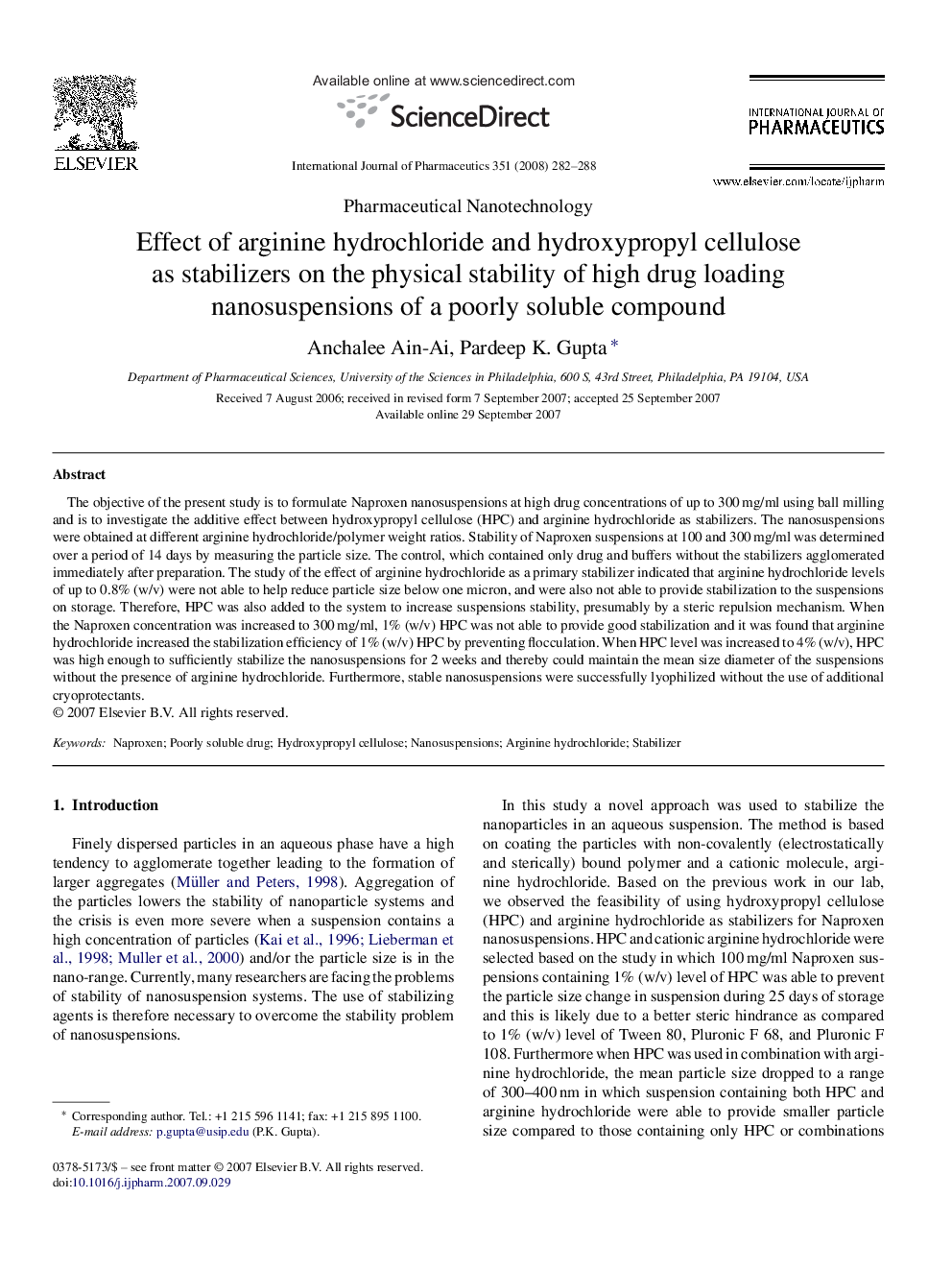| Article ID | Journal | Published Year | Pages | File Type |
|---|---|---|---|---|
| 2505645 | International Journal of Pharmaceutics | 2008 | 7 Pages |
The objective of the present study is to formulate Naproxen nanosuspensions at high drug concentrations of up to 300 mg/ml using ball milling and is to investigate the additive effect between hydroxypropyl cellulose (HPC) and arginine hydrochloride as stabilizers. The nanosuspensions were obtained at different arginine hydrochloride/polymer weight ratios. Stability of Naproxen suspensions at 100 and 300 mg/ml was determined over a period of 14 days by measuring the particle size. The control, which contained only drug and buffers without the stabilizers agglomerated immediately after preparation. The study of the effect of arginine hydrochloride as a primary stabilizer indicated that arginine hydrochloride levels of up to 0.8% (w/v) were not able to help reduce particle size below one micron, and were also not able to provide stabilization to the suspensions on storage. Therefore, HPC was also added to the system to increase suspensions stability, presumably by a steric repulsion mechanism. When the Naproxen concentration was increased to 300 mg/ml, 1% (w/v) HPC was not able to provide good stabilization and it was found that arginine hydrochloride increased the stabilization efficiency of 1% (w/v) HPC by preventing flocculation. When HPC level was increased to 4% (w/v), HPC was high enough to sufficiently stabilize the nanosuspensions for 2 weeks and thereby could maintain the mean size diameter of the suspensions without the presence of arginine hydrochloride. Furthermore, stable nanosuspensions were successfully lyophilized without the use of additional cryoprotectants.
